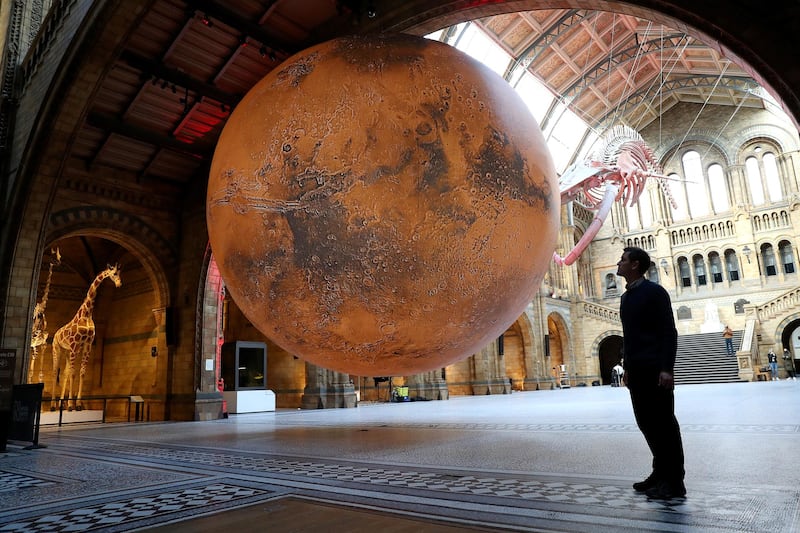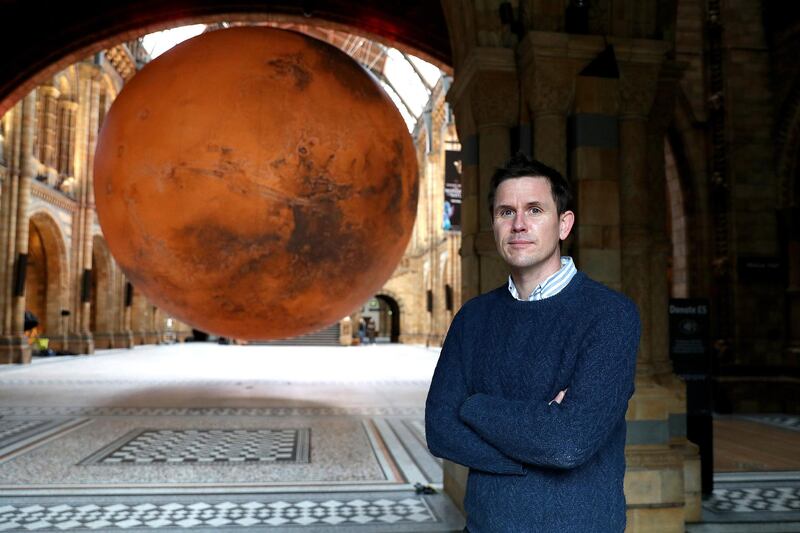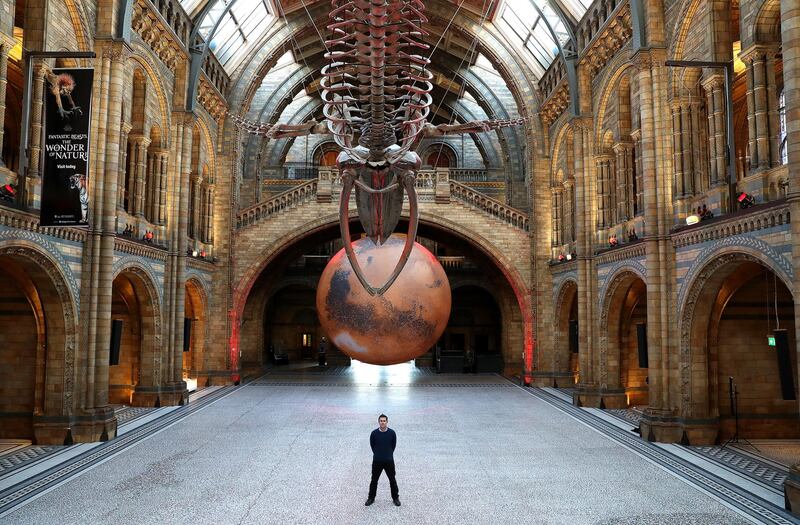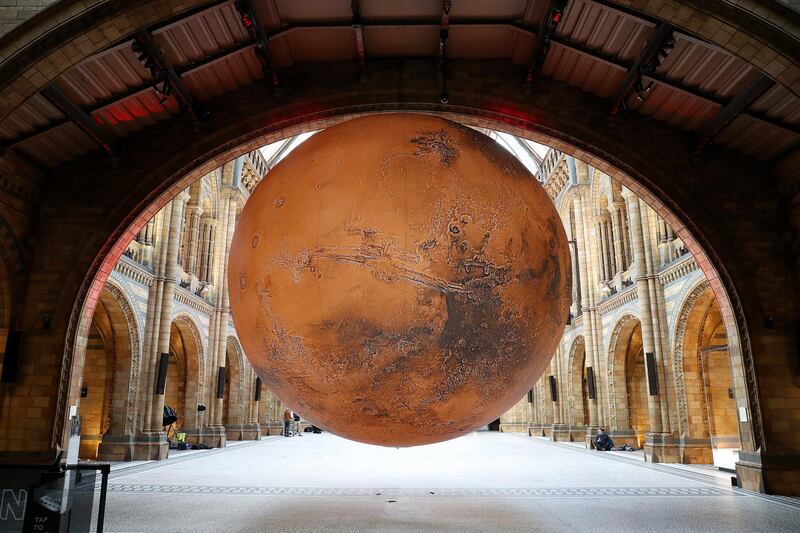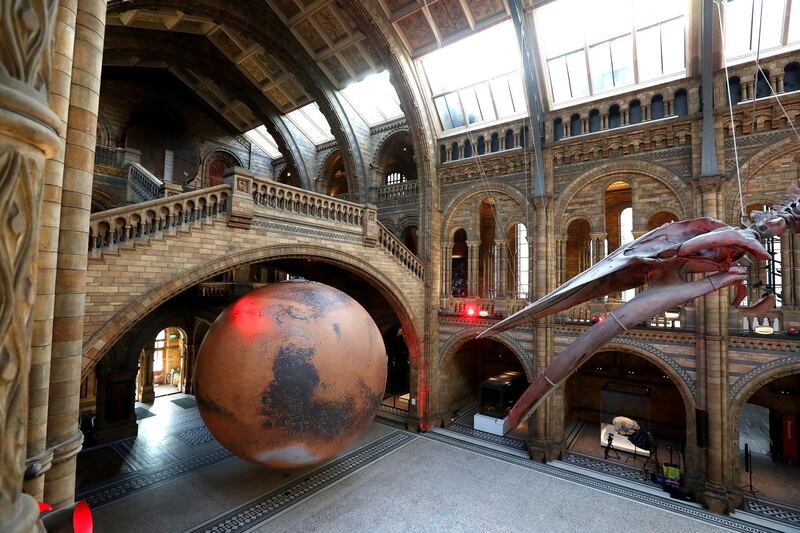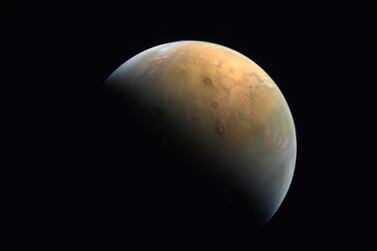An installation depicting the surface of Mars in glorious high-resolution is on display at the Natural History Museum in London.
Measuring seven metres in diameter, the internally lit artwork helps us to imagine what it is like set foot on the Red Planet – without the need for a spacesuit.
The rust-coloured orb renders “every valley and crater” of Mars, using detailed Nasa satellite imagery, with each centimetre representing 10 kilometres of the planet’s surface.
Mars looking good as it begins to get dark at the @nhm_London Natural History Museum . Here filming the artwork for @spacegovuk UK Space Agency today, celebrating the Perseverance Rover mission to Mars . Touch down 3weeks time! @asdc pic.twitter.com/m0c8TgWZxA
— Luke Jerram (@lukejerram) January 29, 2021
The model was devised by British artist Luke Jerram and has been on tour in the US, Latvia and the Netherlands before orbiting back to the UK.
Jerram's website says the artwork allows us to view Mars from the air "as though we are a satellite mapping and studying the surface in perfect detail".
"Every valley, crater, volcano and mountain is laid bare for us to inspect," it says.
Bafta and Ivor Novello award-winning composer Dan Jones created an accompanying soundscape.
The artwork was put up for only a few hours at Hintze Hall late last month, before being taken down.
The release of the photographs of the installation comes at an interesting time for Mars exploration. On Thursday, Nasa's Perseverance probe will land on the Red Planet searching for signs of ancient microbial life.
This week, the UAE released the first close-up image of Mars taken by the Hope probe 24,700 kilometres above the planet’s surface. It was shot by the spacecraft’s camera as it started its two-year journey to collect data on the planet.
Sheikh Mohammed bin Rashid, Vice President and of the UAE and Ruler of Dubai, shared the image on his Twitter account.
“The first picture of Mars captured by the first-ever Arab probe in history, 25,000km above the Red Planet’s surface,” he said.
